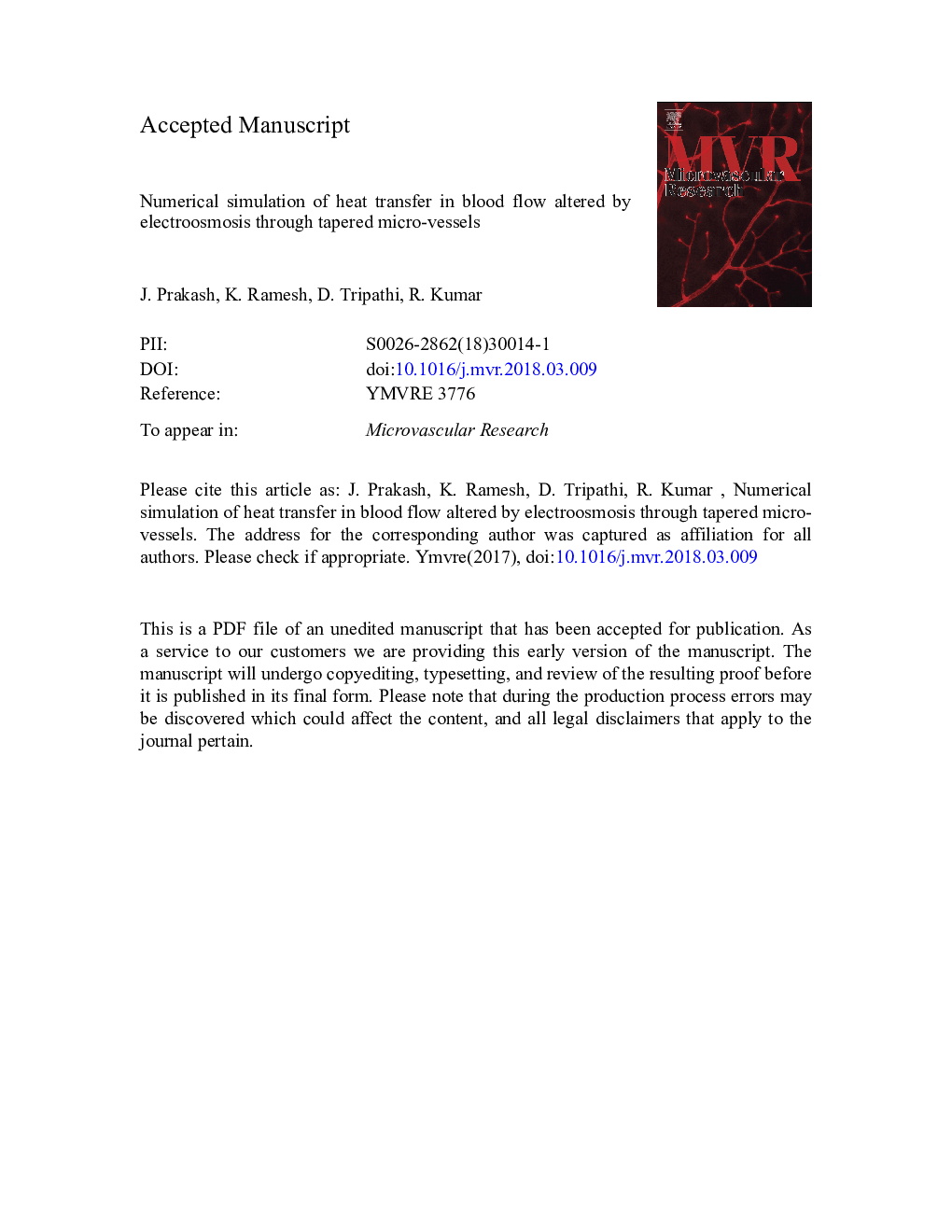| Article ID | Journal | Published Year | Pages | File Type |
|---|---|---|---|---|
| 8340896 | Microvascular Research | 2018 | 34 Pages |
Abstract
A numerical simulation is presented to study the heat and flow characteristics of blood flow altered by electroosmosis through the tapered micro-vessels. Blood is assumed as non-Newtonian (micropolar) nanofluids. The flow regime is considered as asymmetric diverging (tapered) microchannel for more realistic micro-vessels which is produced by choosing the peristaltic wave train on the walls to have different amplitudes and phase. The Rosseland approximation is employed to model the radiation heat transfer and temperatures of the walls are presumed constants. The mathematical formulation of the present problem is simplified under the long-wavelength, low-Reynolds number and Debye-Hückel linearization approximations. The influence of various dominant physical parameters are discussed for axial velocity, microrotation distribution, thermal temperature distribution and nanoparticle volume fraction field. However, our foremost emphasis is to determine the effects of thermal radiation and coupling number on the axial velocity and microrotation distribution beneath electroosmotic environment. This analysis places a significant observation on the thermal radiation and coupling number which plays an influential role in hearten fluid velocity. This study is encouraged by exploring the nanofluid-dynamics in peristaltic transport as symbolized by heat transport in biological flows and also in novel pharmacodynamics pumps and gastro-intestinal motility enhancement.
Related Topics
Life Sciences
Biochemistry, Genetics and Molecular Biology
Biochemistry
Authors
J. Prakash, K. Ramesh, D. Tripathi, R. Kumar,
